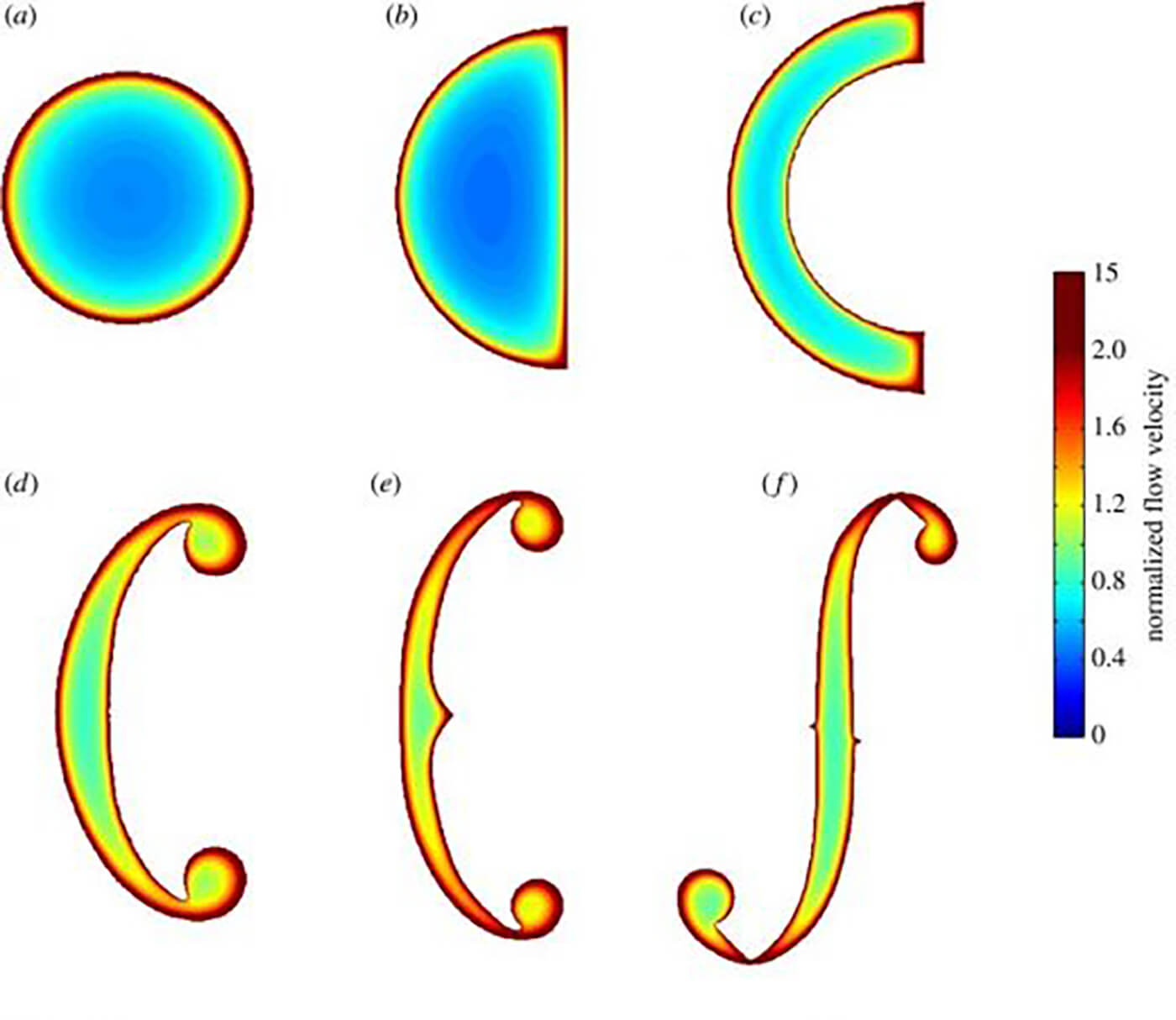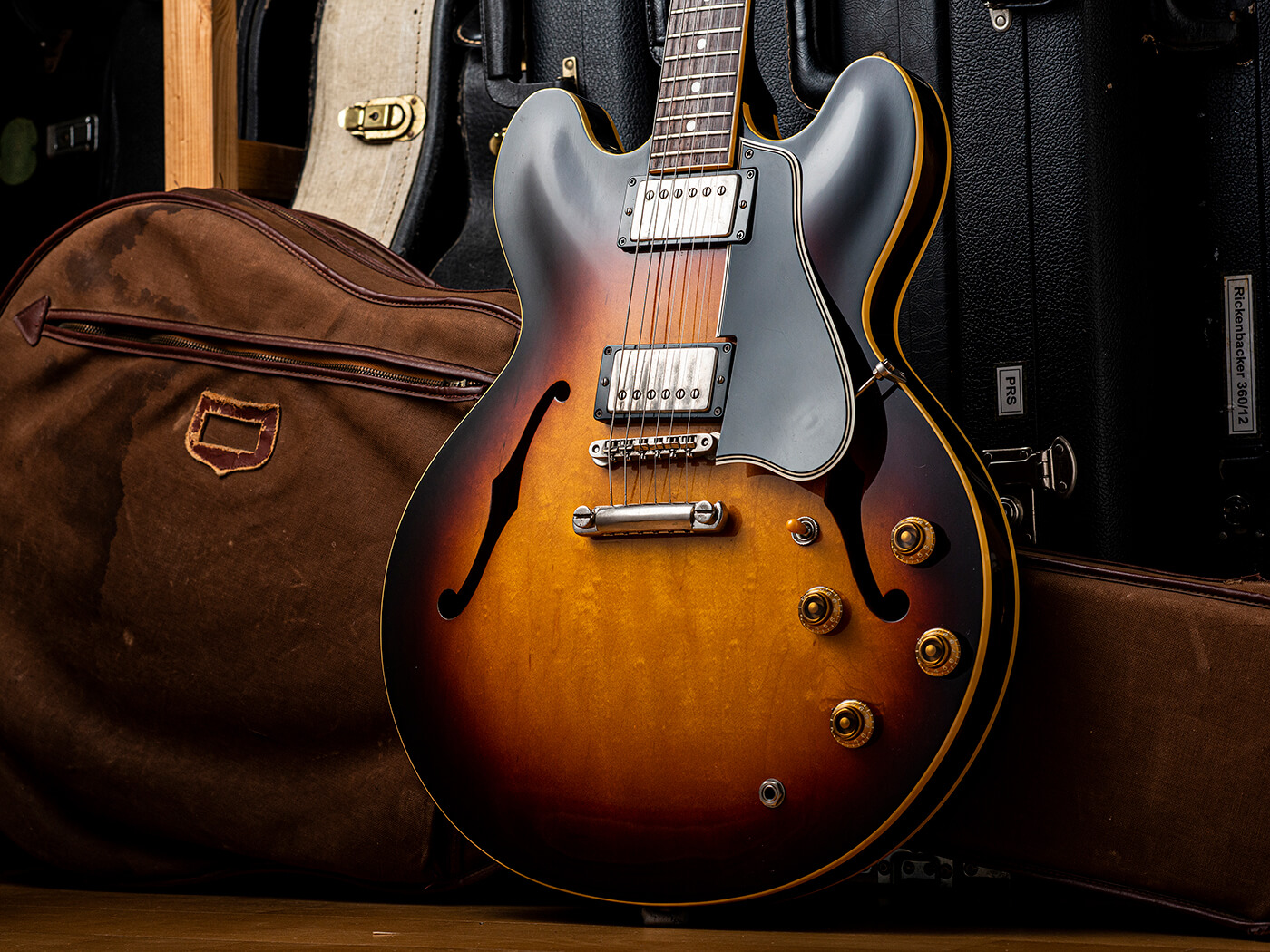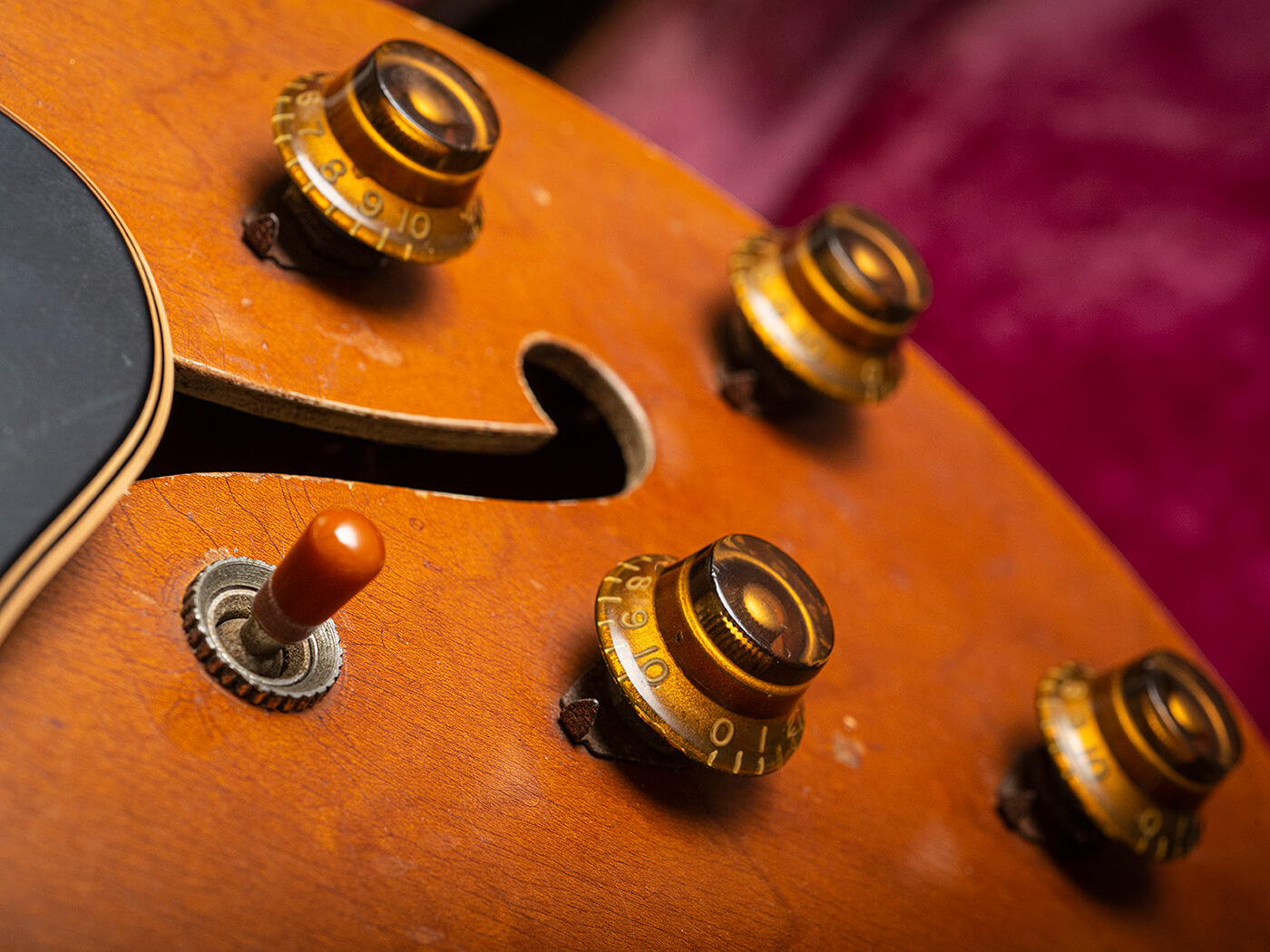For those who’ve ever watched and orchestra or a string quartet play, you’ll most likely have guessed that the f-hole didn’t originate with the electrical guitar, however from the violin household of devices that lengthy predate the fashionable six-string guitar.
In truth, the earliest recognized f-holes had been discovered on devices made by violin makers Andrea Amati Gasparo de Salo, and Pietro Zanetto within the mid-1500s. Previous to that we discovered crescent or “C” formed holes, and previous to that, way back to the tenth century, bowed lutes had round holes within the place we historically see f-holes in the present day. These f-shaped cutouts not solely regarded very trendy, however they had been additionally very practical for projecting sound on acoustic devices, in the same approach that the soundhole on an acoustic guitar does.
Over a number of centuries then, we noticed a gradual evolution of the cutouts over the course of a number of centuries ending with the f-hole design that we all know and love in the present day, beginning with the Gibson Lloyd Loar F-5 mandolin and the L-5 – the primary fashionable guitar to sport what we now consider as a contemporary F-hole. However why did we land on that form? It’s a query that has been contemplated by many a luthier over the generations – particularly given the truth that the form appears to make devices sound undeniably higher.

In truth, there’s some fact on this – a 2015 examine by Massachusetts Institute of Know-how (MIT), revealed within the Royal Society of Publishing (RSP), discovered that air move on the perimeter of sound holes conducts acoustics at a a lot higher price. The additional into the outlet the sound will get the much less it permeates, that means that the scale of the outlet doesn’t essentially affect the amount of sound while the sides of a sound gap permit for far more acoustic resonance.
We’d not perceive the particular mindset of the craftsman behind the primary f-hole, however violin-makers and luthiers have understood this property in much less scientific phrases for a very long time, and have spend 1000’s upon 1000’s of hours experimenting with methods to extend the circumference of the cutout by utilizing different shapes, which has in the end result in the design of the frequent f-hole we all know in the present day.
It can’t be understated how exceptional this evolution is – luthiers within the pre-computer period didn’t have instruments to measure air cavity resonance, they merely needed to experiment by trial and error and utilizing their ears. It appears very probably that the evolution got here on account of “craftsmanship error” as is recommended within the MIT examine.
It’s definitely a legitimate concept, as they didn’t have CNC machines again then and replicating a cutout in throughout that period, utilizing the instruments they did, on the pure grain of wooden, would have been almost not possible. Nonetheless, these “errors” proceed to resonate with musical instrument design to this very day.

F-holes Right now
Rather a lot has modified since then, after all, electrical energy ushered in a brand new approach for stringed devices to be amplified, and with that got here an entire new set of sonic and resonance issues for luthiers to cope with.
Regardless of that, the presence of the common-or-garden f-hole has continued in among the most iconic devices ever made, from Gibson, Gretsch, Fender, Ibanez, PRS and lots of others – lengthy after considerations for maximising acoustic quantity had been solved by the magnetic pickup. So what provides? Does the f-hole serve any actual objective to those devices past making them look cool? You possibly can’t deny that the ES-335, the Nation Gent, and the Thinline Tele will surely be very completely different wanting guitars with out them.
Let’s take the Thinline Tele as maybe probably the most excessive instance – it’s far, far-off from the jazzboxes that will have initially sported f-holes, and certainly even the physique itself isn’t absolutely hole however chambered. Provided that the guitar was designed by Roger Rossmeisl, the maverick genius behind Rickenbacker’s 300 sequence guitars with their slash-shaped cutouts, why would he revert to the old style f-hole for the Thinline if not for purely aesthetic causes? Properly, let’s discover out…

The actual objective of the f-hole on a Thinline Telecaster
Few folks perceive guitar sound higher than Fender’s Chief Engineer and pickup guru Tim Shaw, and he was form sufficient to share his ideas on why a Thinline Tele has an f-hole.
“On hole devices with an f-hole, the movement of the bridge is driving the highest, and the f-hole’s dimension and form impacts the resonance and total tone of the instrument,” he explains.
“Whereas a Fender Telecaster Thinline guitar has giant hole sections, the bridge is anchored to a really strong part of the physique, and it’s not transferring the highest as it will on a hole guitar. The f-hole right here is generally beauty; the tonal distinction on a Thinline is extra a perform of the chambers than the f-hole itself.”

It’s a conclusion echoed by Fender’s Vice President, Analysis & Growth, Stan Cotey “The earliest use of f-holes in musical devices got here from the violin, the place it serves as a gap to a resonant chamber,” he notes. “With resonant chambers, the smaller the opening, the upper the stress round it and the extra resonant the sound.
“Within the case of a Fender Telecaster Thinline guitar, I’m not super-convinced that the chamber actually resonates a lot, and even when it did, I consider it must both affect the string’s movement (and subsequently harmonic content material) or change the pickup’s bodily place in relation to the string to make a lot distinction in digital output. You could possibly most likely hear it acoustically, however whether or not that will translate into one thing that the pickups might seize is perhaps debatable.
Whereas these conclusions are targeted on a Thinline Tele, you may most likely draw related conclusions to any guitar the place the bridge and pickups are mounted on a strong centre block – these f-holes would possibly look nice, however they’re not including an enormous quantity to the tone. The identical may not be stated for fully-hollow devices equivalent to an ES-330 or a jazzbox, however the affect on the tone remains to be prone to be minor and subjective.
However does it actually matter? It may not serve a lot tonal objective on a rowdy rock ‘n’ roll electrical guitar, however the humble f-hole appears as at dwelling in the present day because it did on devices 500 years in the past, and that’s a exceptional feat by anybody’s requirements. It’s additionally a stunning technique to nod to the lengthy historical past
